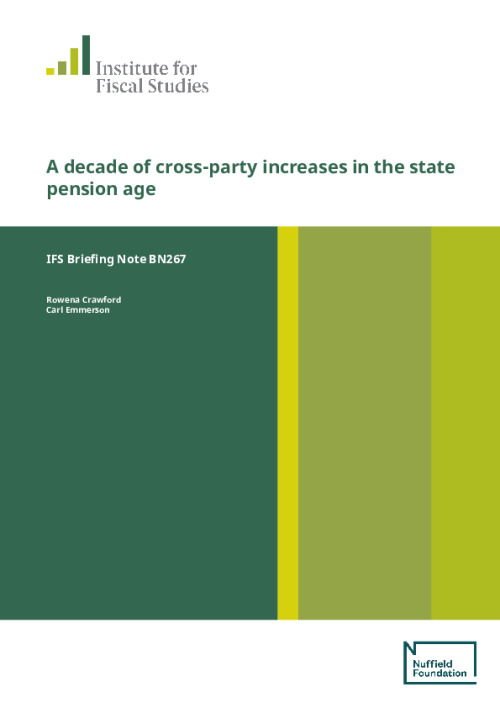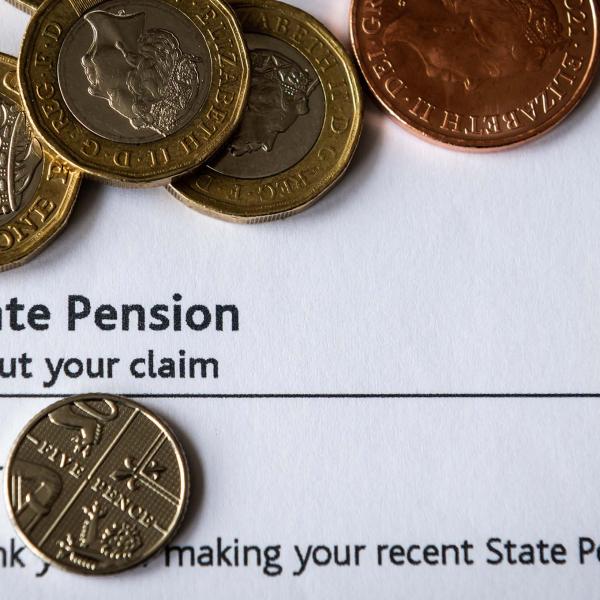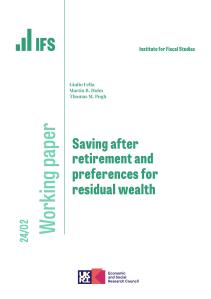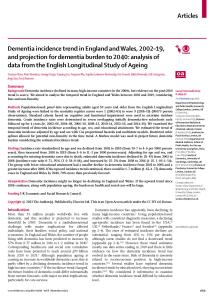This briefing note describes the state pension age increases that have been legislated by various governments in recent decades, and discusses how they relate to improvements in life expectancies and how spending on state pensions is projected to evolve as a result.
Key findings
Recent governments of different political colours have legislated increases to the state pension age. In 1995, the Conservative government legislated to increase the female SPA to 65 in order to equalise it with the SPA for men. In 2007, the Labour government legislated for further increases in the SPA to 66, 67 and 68. In 2011 and 2014, the timetables for various of these increases were brought forwards by the coalition. The current government intends the SPA to increase beyond 68 in future.
Increases in the SPA are a coherent response to increases in life expectancy at older ages. The planned increases beyond age 66 would keep the proportion of adult life spent above the SPA broadly constant. The proportion of individuals expected to reach their SPA is still projected to be rising slightly over time.
The government should be sensitive to the large cliff edge in benefit generosity that occurs at the SPA. Increases in the SPA may be more keenly felt by those unable to work, or to find work, at older ages because of the rapidly increasing cliff edge between the income floor provided to pensioners and that provided to those of working age.
The proportion of the population aged above the SPA will start to increase from next year, having been falling for a decade due to the increases in the SPA. Between 2020 and 2026 – when the SPA starts to increase from 66 to 67 – the proportion of the population of pensionable age is projected to increase from 18% to 19%. By 2040, the proportion is projected to reach 21%, despite a further increase in the SPA to 68.
The financial sustainability of the state pension system is improved by the increases in the SPA. Over the next decade, state pension spending as a share of national income is projected to be relatively flat. However, between 2027 and 2037, annual state pension spending is projected to increase by around 0.9% of national income (£20 billion in today’s terms). A further 1% of national income is projected over the following two decades, despite the two further increases in the SPA.
Around half of the increase in state pension spending projected over the long term is driven by the ‘triple lock’ indexation policy. This should be ended. If the government wishes to protect pensioners from any year-to-year real-terms fall in the value of the state pension – while also increasing it in line with average earnings in the long run – then it should introduce a ‘smoothed earnings link’.










